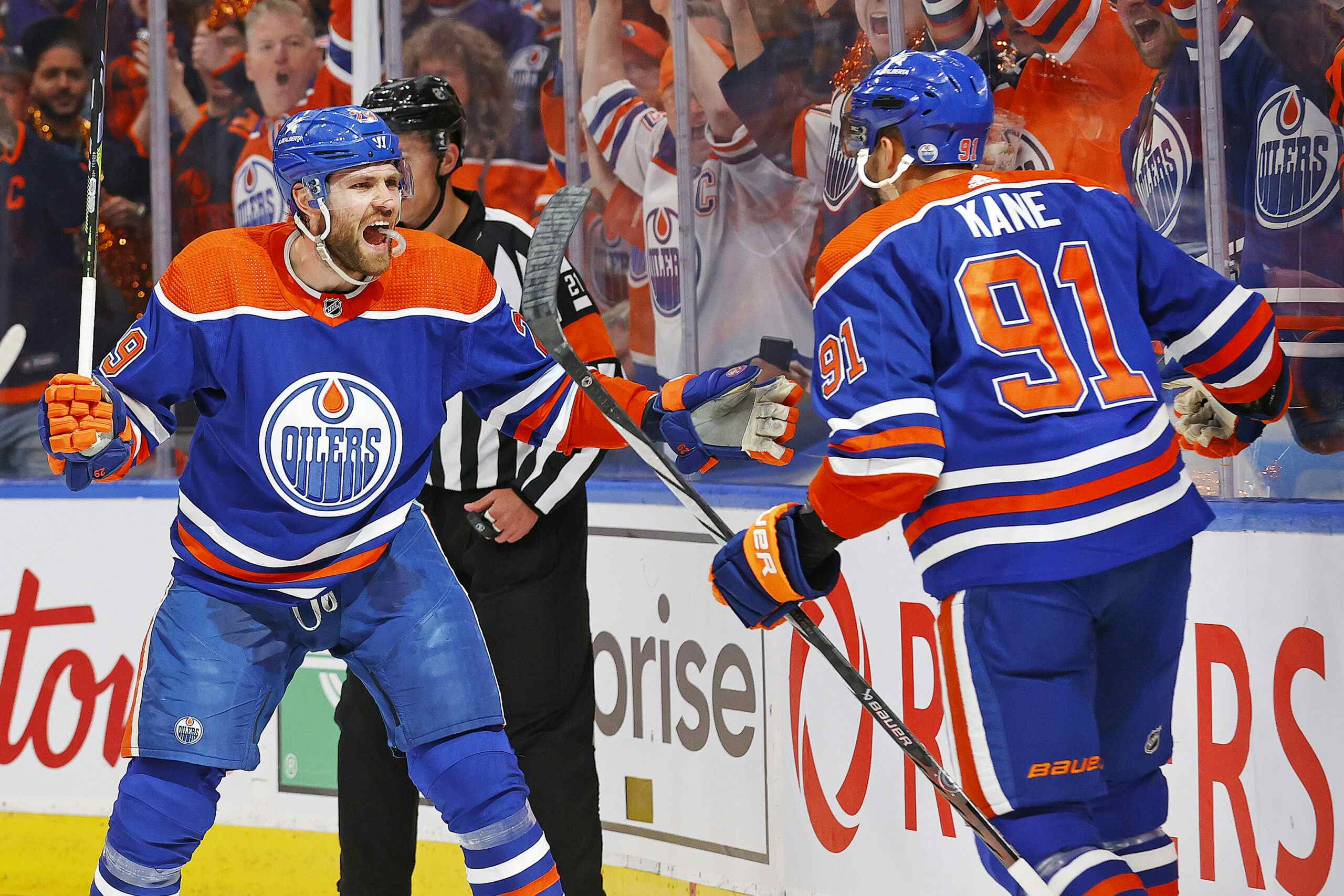Scoring Chances at the Olympic Break: Defencemen

The Edmonton Oilers’ defence corps is poorly regarded, and with good reason: it simply isn’t good enough. With that said, while it’s an awful mess there are also at least some building blocks in place. Who are they? To try and answer that question, we’ll look at the Oilers’ scoring chance totals with various defencemen on the ice, as well as some other statistics.
The Chart

- Side: Which side the player primarily plays; in cases where he can/has played both his primary side is lifted first.
- SC+/SC-: Total even-strength scoring chances the player has been on the ice for.
- SC%: Total ratio of even-strength scoring chances the player has been on the ice for, with 50 percent representing break even and higher being better than lower.
- Fen%: Total ratio of five-on-five unblocked shot attempts (shots and missed shots) the player has been on the ice for, with 50 percent representing break even and higher being better than lower.
- QC Rk.: Each player’s rank in Quality of Competition
- ZS%: Total ratio of non-neutral zone shifts the player has started in the offensive zone, with 50 percent representing break even and higher meaning more time in the opposition end.
Scoring chances totals are as counted by me; other statistics courtesy of ExtraSkater.com.
The Players

Martin Marincin has been a breath of fresh air. The 6’4”, 188 pound rookie leads the entire team in scoring chance percentage, despite the fact that he’s starting three out of five shifts in the defensive end of the rink. This is a remarkable, almost miraculous performance, and it didn’t have come a moment too soon. It’s likely established Marincin on Edmonton’s blue line.

Jeff Petry is one of the most divisive players on the team, with some fans feeling that the day the Oilers move him it will be addition by subtraction and others seeing him as the best NHL defenceman on the roster today. I’m in the latter camp. Petry isn’t breaking even, but the Oilers are much, much better when he’s on the ice despite the fact that he’s playing brutal minutes in terms of who he plays against (good players) and where he starts on the ice (the defensive zone). At 6’3”, 195 pounds he could use both some weight and some snarl but he’s an awfully nice piece today.

Philip Larsen is an odd player to see so high but there are two big caveats here. Firstly, the coaching staff is sheltering him in a major way, and secondly the scoring chance numbers are much higher than the on-ice shot numbers. Over time one would expect the two to more or less line up, and in this case I suspect the larger total (the shot numbers) is the accurate one; at least that’s what my eyes tell me. I don’t really think Larsen should be any higher than seven or eight on an NHL depth chart.

Anton Belov’s an interesting player, too. The big Russian (6’4”, 218 pounds) has foot speed problems and there is probably no player on the team who oscillates between great and terrible as frequently. With that said, the Oilers have done pretty well when he’s on the ice, albeit in a sheltered role, and I’d like to see him get a bit more time just to be sure of what he is. Some European players struggle a lot in their first North American seasons, and he has some nice tools; a strong finish (if he gets the minutes) could suggest he’s coming around.

Andrew Ference’s awful numbers need to be considered in context: He’s playing extremely difficult minutes. This guy was a No. 4 defenceman for an excellent team a year ago and has some good qualities, but he’s in desperate need of a reduction in workload.

Justin Schultz, who has regularly partnered with Ference and Schultz the elder, is in a similar boat to the Oilers’ captain. He has some nice tools, especially in the offensive zone, but he’s getting killed in a primary role. In a perfect world, he’d be on the Oilers’ third pairing next season.

Nick Schultz is having a rough season, even when we allow for a heavy defensive zone assignment. He’s been worse of late, too, and it seems to be related to the quality of competition he’s facing – when he plays bottom-pairing opponents he’s somewhat okay, but when he moves up the lineup he gets hammered.
Recently by Jonathan Willis
- OGDB 3.0: The real games start
- Anton Lander has forced the Oilers’ hand
- Six straight wins for Oklahoma
- OGDB 1.0: So It Begins
- Dallas Eakins and the Toronto Marlies
- Phoenix could be a good trade destination for Ales Hemsky
- What the Oilers have/What the Oilers need: Forwards
- Follow Jonathan Willis on Twitter!
Recent articles from Jonathan Willis





